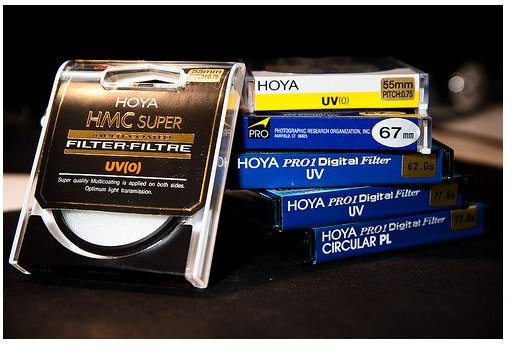What is The Best Camera Filter Brand?
Introduction
After the transition to digital SLRs, filters, especially UV filters, are not as needed since UV filters are built into the camera’s sensor. Today, they serve primarily as a clear protection for a lens’s front element. They protect against dirt, water, scratches, and drops from damaging your lens. Other filters like circular polarizing filters (CPL) or neutral density filters (ND) cut down on the light your camera sees for creative effects unachievable in digital post processing. These three filters are the must haves for every photographer. Beyond these three, there are many other types of filters and brands. Some brands are better than others and some are pure garbage and should not be used. We will help you sort through them so you can find the best camera filter brand.
Filter Brands
As previously stated, the main goal of the filter is to protect your lens or give it a creative look with the addition of a CPL or ND filter. The filter should not detract from the image quality of your lens. In other words, there should be no perceivable difference in a photo with and without a filter attached to your camera. If there is, then it is not doing its job properly. The addition of a poorly-made filter can result in soft images, chromatic aberrations, vignetting, or additional lens flare. With filters, you certainly get what you pay for in that more expensive filters will have more multi-coatings and better build qualities.
Hoya - Hoya is a Japanese company and one of the largest filter manufacturers on the market. Other large companies are B+W (made by Schneider Optics) and Tiffen. Hoya has a wide range of filter tiers (listed worst to best, cheapest to most expensive): Green line, Purple line, Multi-Coated (MC), High Multi-Coated (HMC), Super Multi-Coated, Pro-1D, and the most expensive HD filters. Hoya’s line of HMC, S-HMC, Pro1-D, and latest HD filter line is by far the best value. Optically, they are on par with the more expensive Heliopan and B+W filters. If you just need a hood filter, go with the S-HMC or HMC lines. For higher end lenses and maximum protection, I would recommend the HD line for the hardened “HD” glass or the Pro-1D if you are looking for something thinner for wide lenses.
B+W - B+W is a large German company (Schneider Optics). They are known for their excellent filter clarity, brass rings, and optically clear Schott (Zeiss) glass. Their filters are among the best and known for being very easy to clean. They have several lines like Hoya which include the standard F-PRO series with no coatings, multi-resistant coatings (MRC), and the digitally designed XS-PRO series with MRC. If budget is not an option or you just want the best glass and coatings, go with B+W filters.
Tiffen - Tiffen is a well-known American company for their many cinematic and photographic filters and other gear. They are cheaper than the previous brands and perform as such. Optically, their filters are poor and result in soft images. They also have issues with lens flare and other chromatic aberrations. Their two main lines are their standard filters and HT (Hi-Trans Double-Sided Titanium Multi-coating)
Heliopan - Heliopan is another German manufacturer of filters which also uses exclusively Schott (Zeiss) glass. Like B+W, they also use brass rings. They have two lines, their standard filters with no coatings and the SH-PMC (16 layer multi-coating) which offers 99.5% light transmission and repels dust and moisture. Heliopan filters are very pricey. A 77mm SH-PMC UV filter will run you close to $140 while a similar Hoya HD or B+W XS-PRO MRC are about $100. While Heliopan’s quality is undeniable, there is a diminishing return for spending so much on a filter. A high end Hoya or B+W will do the job just as well.
Caution
As a side note when purchasing a UV filter, purchase only UV(0) filters and avoid the UV(N) filters which are made from an inferior type of glass and marketed to be a cheaper alternative.
Also, if the price seems too good to be true, it might be a fake filter. Check the seller or store’s feedback to make sure you actually get what you are paying for! Once you get the filter, check the packaging to make sure it looks authentic. Sometimes it can be difficult to tell. One of the things that cannot be faked is the application of a coatings. If you hold the lens up to a bright light source and tilt it, it should reflect different colors, usually greens or magentas. If it does, that is how you can confirm that it is multicoated.
Testing Your Filters and Conclusion
Remember that these UV filters are only to protect your expensive investment of a lens. As such, don’t skimp out on buying a decent filter. What’s the point of buying a $1000 or more lens only to stick a cheap $20 filter on it. You’re going to get a $20 result and not reap the benefits of buying such a beautiful lens, costing you more money and headache in the long run.
